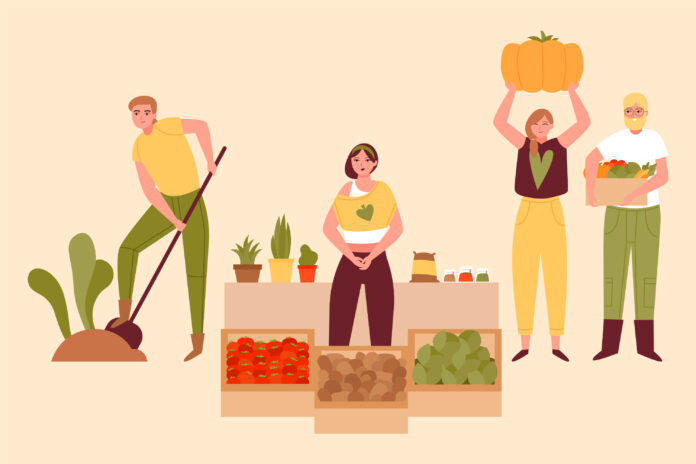Growing Your Own Food at Home
In recent years, there has been a resurgence of interest in growing your own food at home as people seek to reconnect with nature, reduce their carbon footprint, and enjoy the taste and freshness of homegrown produce. Whether you have a backyard garden, a balcony, or even just a sunny windowsill, growing your own food offers a rewarding and sustainable way to nourish yourself and your family. In this comprehensive blog, we’ll explore the step-by-step process of growing your own food at home, from seed to table.
”Process of Growing Your Own Food at Home”
-
Planning Your Garden
The very first step in growing your own food at home is planning your garden. Consider factors such as available space, sunlight exposure, and soil quality. Choose a location that receives at least six hours of sunlight per day and has well-draining soil. Take stock of your available space and decide what types of crops you want to grow based on your preferences and dietary needs.
-
Choosing Your Crops
Selecting the right crops is crucial for a successful harvest. Consider your climate, growing season, and available space when choosing what to plant. Beginners may want to start with easy-to-grow crops like tomatoes, lettuce, herbs, and radishes. If space permits, consider adding a variety of fruits, vegetables, and herbs to diversify your garden and maximize your harvest.
-
Soil Preparation
Healthy soil is the foundation of a successful garden. Before planting, prepare your soil by loosening it with a garden fork or tiller and removing any weeds or debris. Amend the soil with organic matter such as compost, aged manure, or garden soil mix to improve soil structure, fertility, and moisture retention. Test your soil pH and amend it as needed to create an optimal growing environment for your crops.
-
Planting Your Garden
Once your soil is prepared, it’s time to plant your garden. Follow planting instructions on seed packets or plant labels, and space your crops according to their specific requirements. Consider companion planting to maximize yield and minimize pests and diseases. Water your garden thoroughly after planting, and continue to water regularly to keep the soil evenly moist.
-
Tending to Your Garden
Regular maintenance is essential for a healthy and productive garden. Keep an eye out for pests and diseases, and address any issues promptly. Mulch around your plants to suppress weeds, conserve moisture, and regulate soil temperature. Fertilize your garden periodically with organic fertilizers to provide essential nutrients for plant growth.
-
Harvesting Your Bounty
As your plants grow and mature, they will produce an abundance of fresh, homegrown produce. Harvest your crops as they ripen, and enjoy the fruits of your labor in delicious, home-cooked meals. From garden-fresh salads to homemade salsa and fruit preserves, there’s nothing quite like the taste of homegrown food.
-
Embracing the Rewards
Growing your own food at home is a rewarding and fulfilling experience that nourishes both body and soul. Not only does it provide you with fresh, healthy produce, but it also fosters a deeper connection with nature and promotes sustainable living. Embrace the process of growing your own food as a journey of self-sufficiency, empowerment, and joy.
Conclusion
Growing your own food at home is a journey that begins with a seed and ends with a delicious meal on your table. By planning, planting, and tending to your garden with care and dedication, you can enjoy the satisfaction of harvesting your own fresh produce and savoring the taste of homegrown goodness. So roll up your sleeves, dig in the dirt, and embark on the fulfilling journey of growing your own food at home. Enjoy your own food !





Good